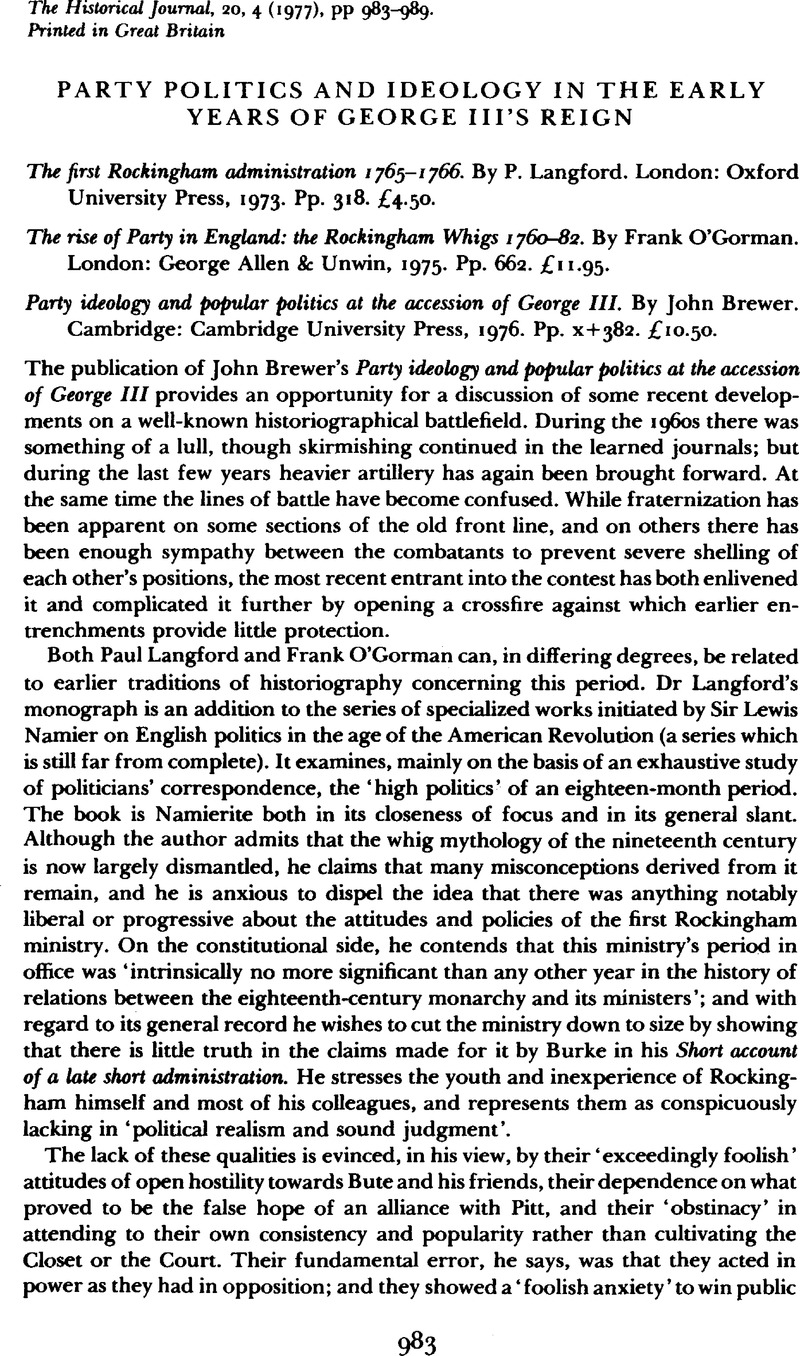Article contents
Party Politics and Ideology in the Early Years of George III's Reign
Published online by Cambridge University Press: 11 February 2009
Abstract

- Type
- Review Articles
- Information
- Copyright
- Copyright © Cambridge University Press 1977
References
1 The works of the Right Honourable Edmund Burke (12 vols., London, 1899), i, 418.Google Scholar
2 Namier, , in the well-known first chapter of The structure of politics at the accession of George III, recognized that the motives of men who went into parliament varied, but he did not investigate what differences might have existed in this respect among those whom he classed together as ‘the political factions contending for power’.Google Scholar
3 Sir Herbert Butterfield, the most distinguished recent historian to have criticized the Namierite interpretation of the Rockingham whigs, is not mentioned either in the text or in the bibliography.
4 Namier, L. B., England in the age of the American Revolution (2nd edn, London, 1961), p. 53;Google ScholarBrooke, J., The Chatham administration 1766–1768 (London, 1956), pp. 276–7, 282.Google Scholar
5 Cf. Collyer, G., ‘The Rockingham connection and country opinion in the early years of George III’, Proceedings of the Leeds Philosophical and Literary Society (Literary and Historical Section), VII (1955), 251–72.Google Scholar This article is attributed to the wrong journal by Dr O'Gorman, whose book contains a considerable number of small mistakes: to give one or two other examples, Lyttelton appears throughout as Lyttleton, Edgcumbe as Edgecumbe, and Professor Rudé - almost always - as Professor Rude.
6 Cf. Christie, I. R., Myth and reality in late-eighteenth-century British politics and other papers (London, 1970), pp. 14–15, 15n.Google Scholar
7 ‘The principles and practice of opposition: the case of Bolingbroke versus Walpole’, in Mckendrick, Neil (ed.), Historical perspectives: studies in English thought and society in honour of J. H. Plumb (London, 1974), pp. 93–128.Google Scholar
8 Cf. Butterfield, H., ‘George III and the constitution’, History, XLVII (1958), 20:Google Scholar ‘The Namier interpretation refuses to see any serious conflict of ideas, any serious political issues, in the events of the years 1760–3.’
9 Namier, L. B., Personalities and powers (New York, 1965), p. 4.Google Scholar
10 Butterfield, loc. cit.
11 See, e.g., Times Literary Supplement, 4 July 1975, p. 725.Google Scholar
12 Dr Langford has, however, examined certain manifestations or supposed manifestations of public opinion in the politics of George II's reign: see ‘William Pitt and public opinion, 1757’, English Historical Review, LXXXVHI (1973), 54–79;Google Scholar and The Excise crisis (Oxford, 1975), chapter x.Google Scholar
- 1
- Cited by




